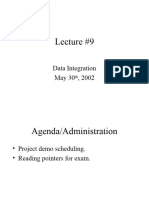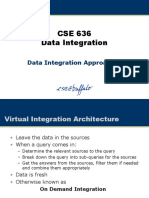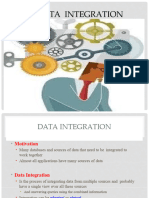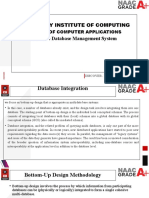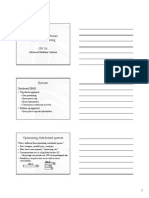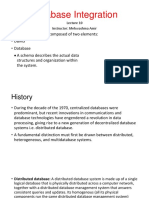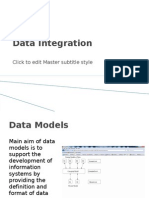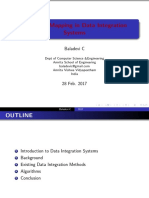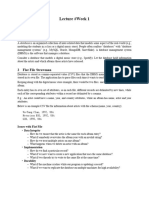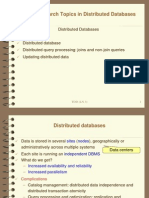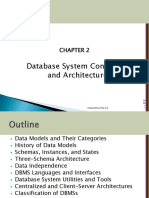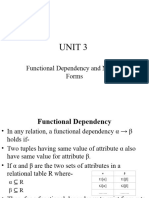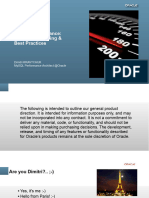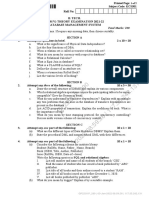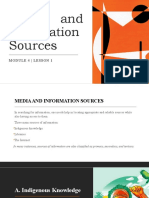0% found this document useful (0 votes)
4 views42 pagesData Integration
Data integration provides uniform access to data from multiple, heterogeneous sources, enabling users to query diverse datasets seamlessly. It faces challenges such as schema heterogeneity and distributed query processing, and can be implemented through architectures like data warehousing or virtual data integration. Applications span various fields including business, science, and government, with methods like Global-as-View and Local-as-View for schema mapping to facilitate data integration.
Uploaded by
Ahmad MousaviCopyright
© © All Rights Reserved
We take content rights seriously. If you suspect this is your content, claim it here.
Available Formats
Download as PDF, TXT or read online on Scribd
0% found this document useful (0 votes)
4 views42 pagesData Integration
Data integration provides uniform access to data from multiple, heterogeneous sources, enabling users to query diverse datasets seamlessly. It faces challenges such as schema heterogeneity and distributed query processing, and can be implemented through architectures like data warehousing or virtual data integration. Applications span various fields including business, science, and government, with methods like Global-as-View and Local-as-View for schema mapping to facilitate data integration.
Uploaded by
Ahmad MousaviCopyright
© © All Rights Reserved
We take content rights seriously. If you suspect this is your content, claim it here.
Available Formats
Download as PDF, TXT or read online on Scribd
/ 42
